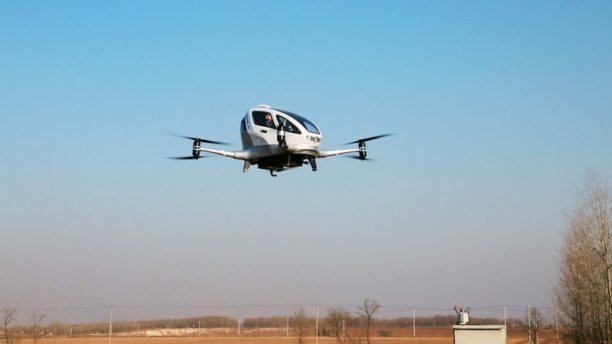
It can be tough to figure out what’s going on with Ehang. In October, DRONELIFE reported that a credible source said the company was considering bankruptcy. A week later, company CEO Derrick Xiong said the rumors were false and the company was in a “very good financial position.” In November, Ehang’s PR representative had an interview with DRONELIFE reiterating that while the company was closing overseas offices, it was still going strong and would “focus on commercial efforts.” But that might not have been the whole story: Ehang, the Chinese drone manufacturer making the Ghost drone quadcopter and the Ehang 184 passenger drone, appears to have filed for bankruptcy in the CA courts.
It’s hard to see what that means. According to the court filing, filed two days before the end of 2017, the company’s assets are under $500,000 and their liabilities greater than $1,000,000. But the international website is still up, the Ghost is still for sale, and as recently as last week the company was at the SXSW Festival announcing the flight readiness of the Ehang 184: it may just mean that Ehang failed to pay the rent on their CA offices.
In many ways, the company’s problems may be because their ideas were simply too far out ahead of regulations and infrastructure. Ehang first wowed the crowd at CES in January of 2016, when they introduced the world to the first autonomous passenger drone. But as the drone industry understands all too well, technology often precedes regulations and commercial use cases. In the years that it takes to perfect and establish a commercial model for an innovative technology like passenger drones, many worthwhile companies may struggle to keep going. The first autonomous cars were developed in the 1980’s, but we still haven’t seen them enter the mainstream.
Over the last several months, Ehang has penned deals with healthcare companies to provide medical drone delivery for organ transplants; released new Ghost models; and signed testing agreements for the Ehang 184 with the state of Nevada. Additionally, the company says that they plan to release a 2 passenger drone, the Ehang 284, this summer.
As urban air mobility becomes a more relevant topic around the world, passenger drones could very well be an import part of those efforts. And as the first player to really show the US what a passenger drone looks like, Ehang has staked a claim in that space. Let’s hope that the commercial applications appear quickly enough to support new development.

Miriam McNabb is the Editor-in-Chief of DRONELIFE and CEO of JobForDrones, a professional drone services marketplace, and a fascinated observer of the emerging drone industry and the regulatory environment for drones. Miriam has penned over 3,000 articles focused on the commercial drone space and is an international speaker and recognized figure in the industry. Miriam has a degree from the University of Chicago and over 20 years of experience in high tech sales and marketing for new technologies.
For drone industry consulting or writing, Email Miriam.
TWITTER:@spaldingbarker
Subscribe to DroneLife here.







[…] Source link […]